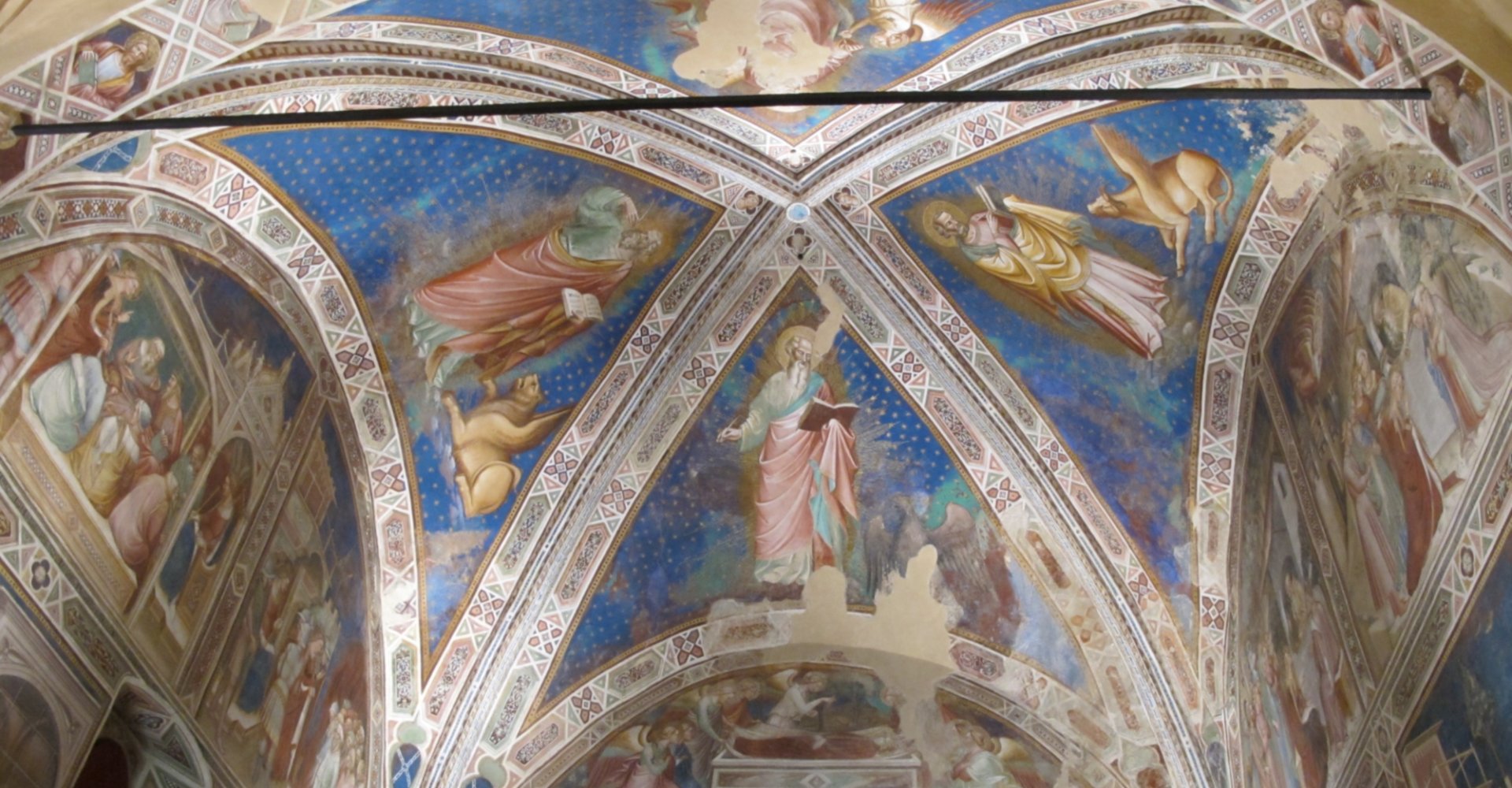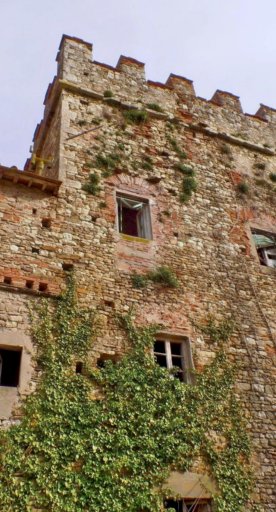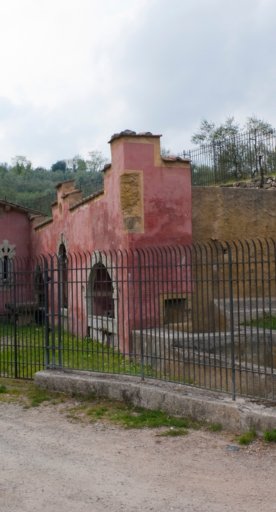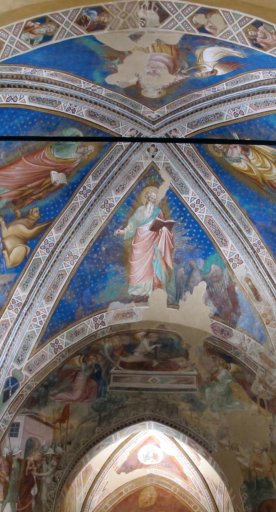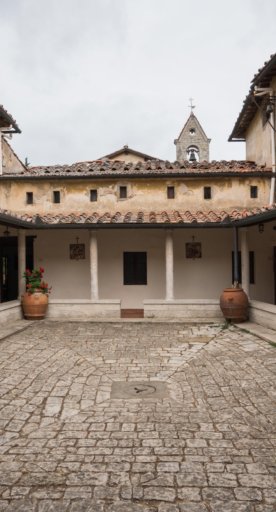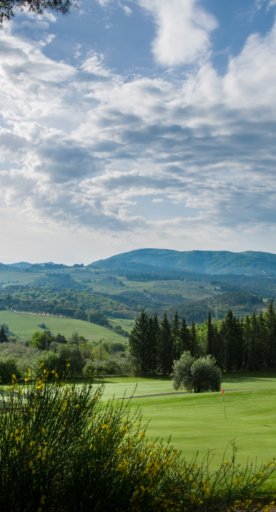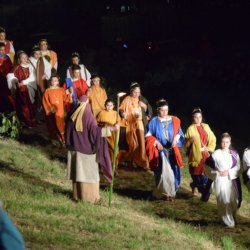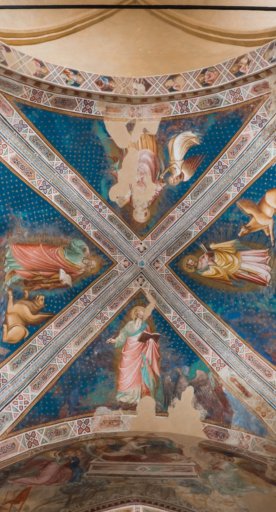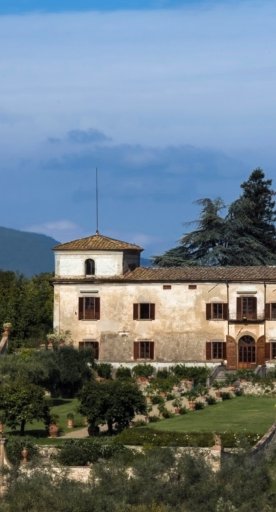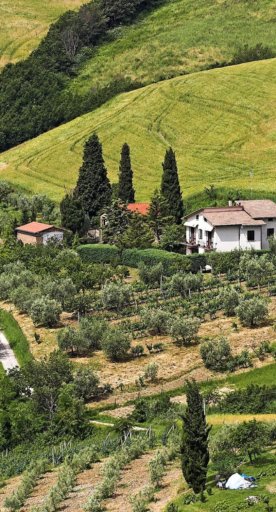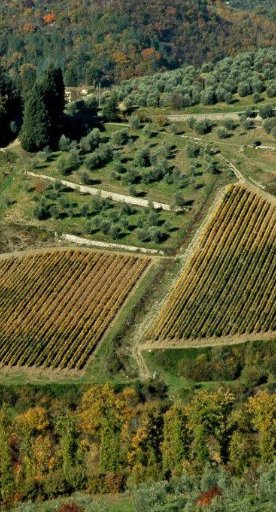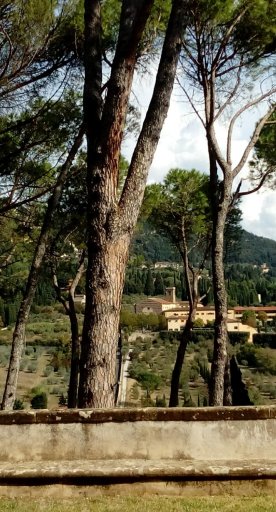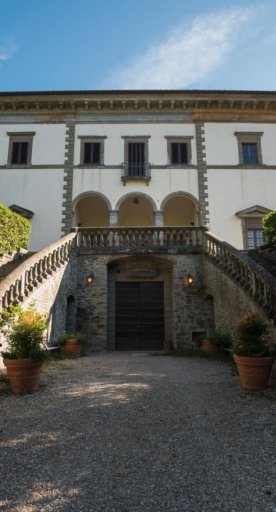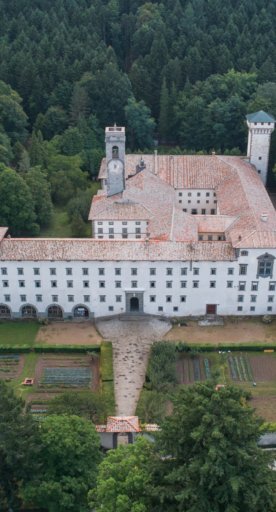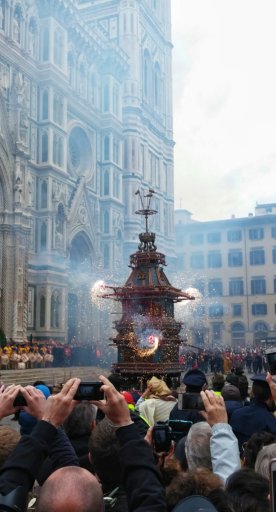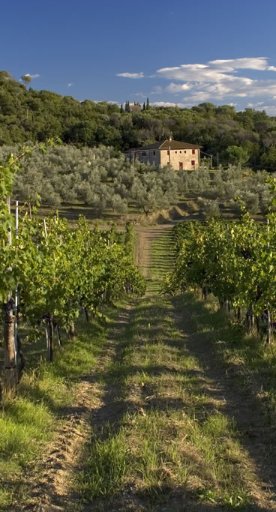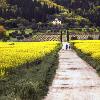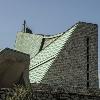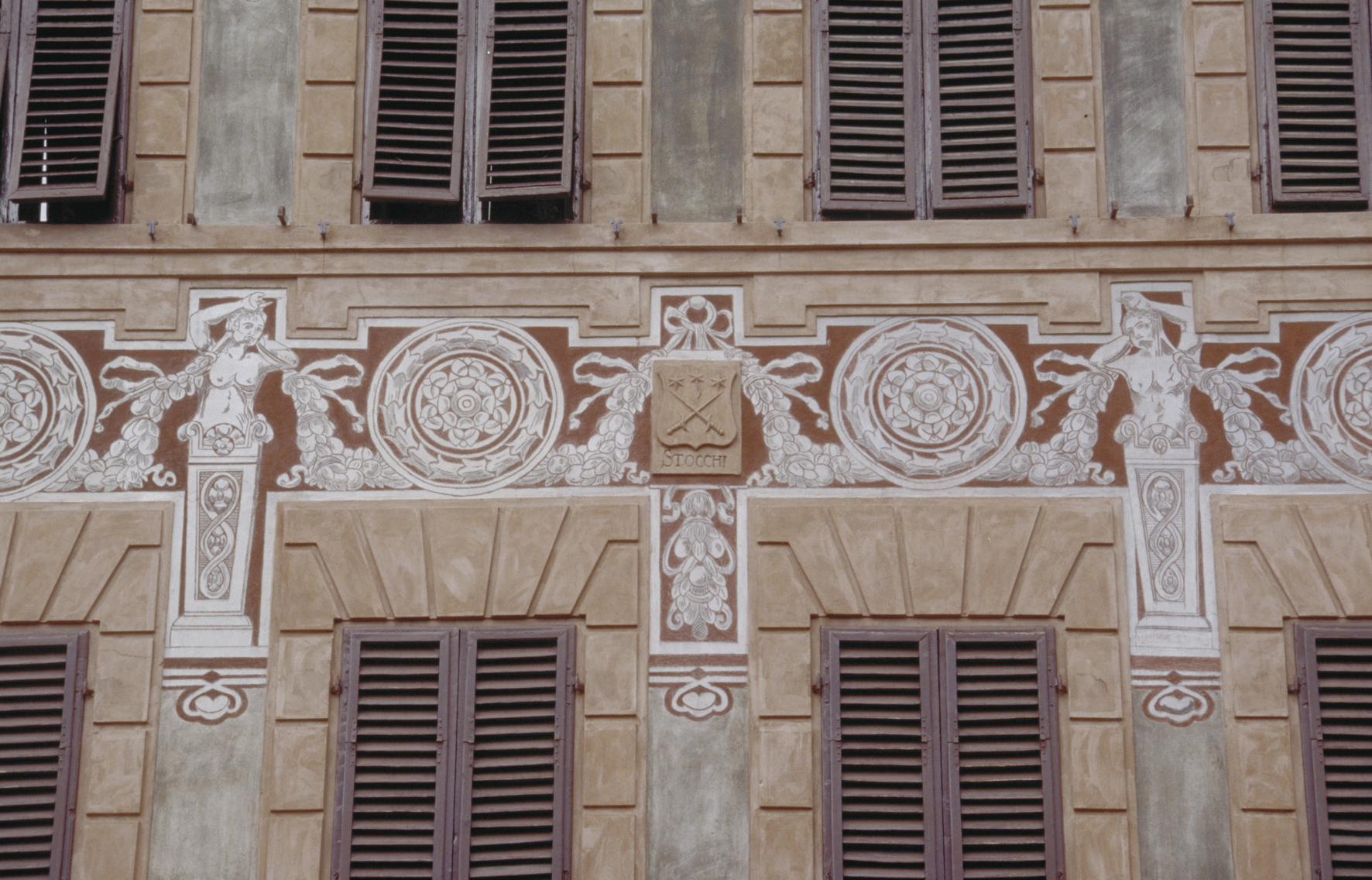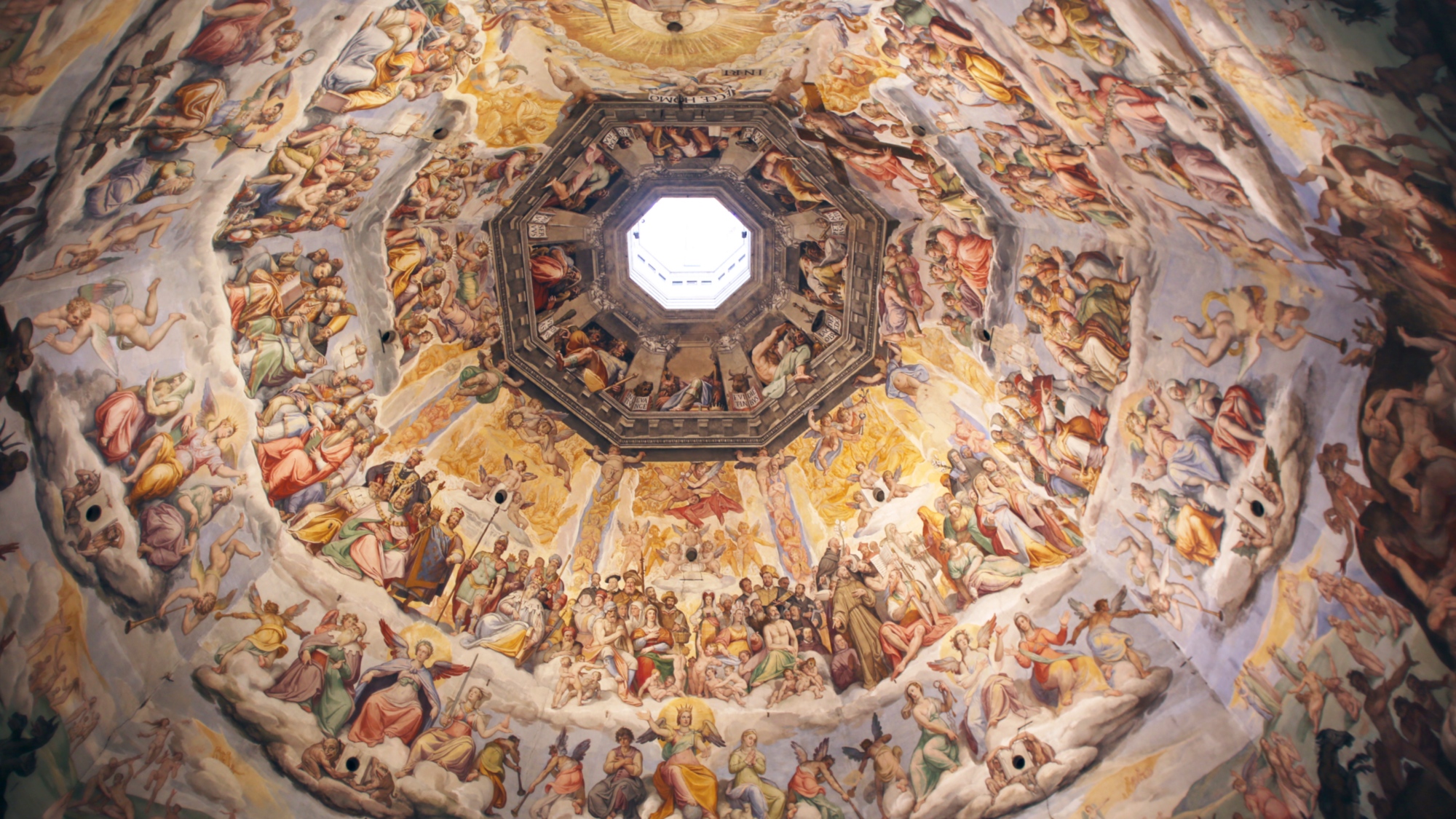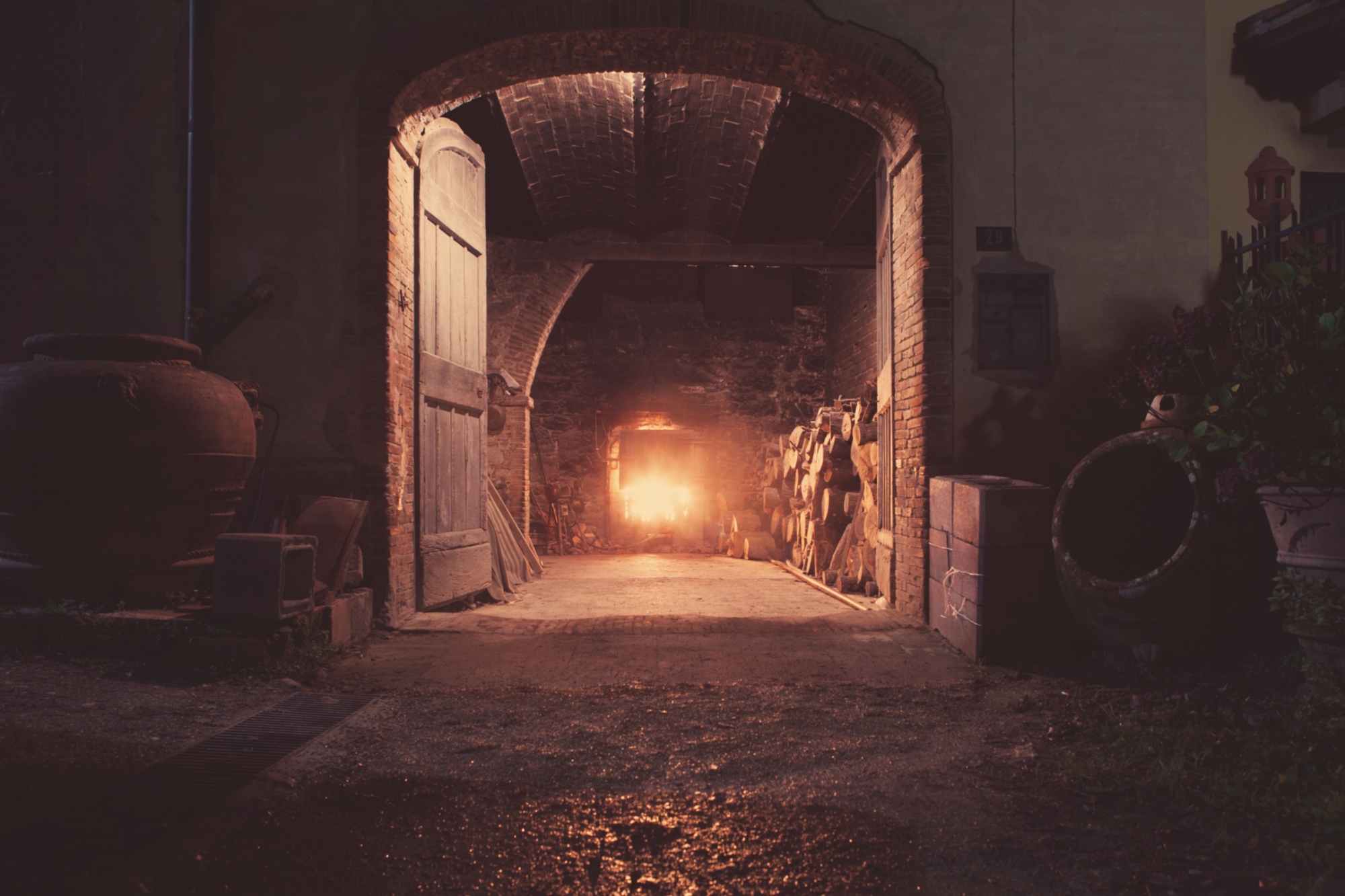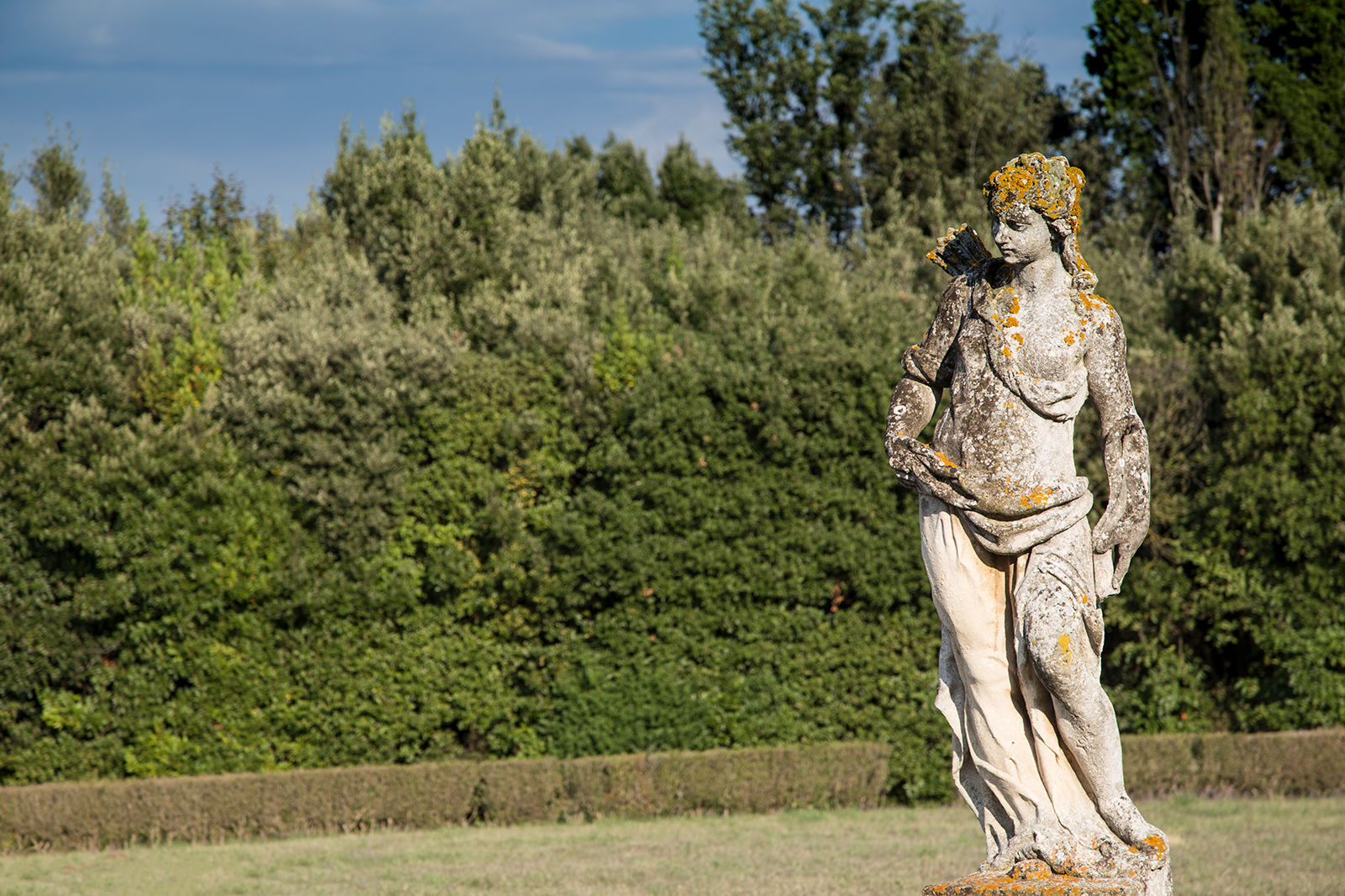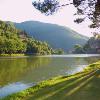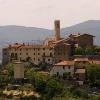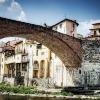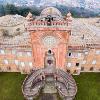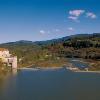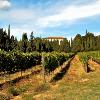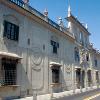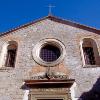Bagno a Ripoli’s most important sacred site is the Parish Church of San Pietro a Ripoli, considered to be one of the oldest churches in Italy. Inside is a Roman baptismal font, a fresco with St. John the Baptist, a crucifix credited to Taddeo Gaddi, a 1350 painting by the Giotto workshop and a table with Jesus on the Cross, probably by Andrea del Sarto.
The “Bigallo,” the famous Spedale dei Viandanti, and the poetic Nymphaeum by Giambologna, (better known as the Fata Morgana Fountain) are all unmissable. The area’s mysterious and magical aura has, over the centuries, lead to the birth of legends around the 16th-century Nymphaeum: there are tales of young girls appearing and disappearing and its waters’ magical properties, which supposedly bring back your youth.
Once here, a visit to the Oratory of Santa Caterina delle Ruote is a must, commissioned by the Florentine Alberti family in 1354 and not far from the Cemetery of Ponte a Ema. Despite the austere appearance of its façade, the interior of the small church will amaze with its majestic fresco cycle narrating the life of the princess and martyr Santa Caterina of Alexandria, known as “delle Ruote” (of the wheels) due to the way that she was martyred. The cycle was painted around 1360 by the Maestro di Barberino and Pietro Nelli, responsible for the decoration of the apse and the preceding arch; it was completed on the behest of Benedetto Alberti beginning in 1387 by Spinello Aretino, a brilliant proponent of late-Gothic painting.
The three parish churches around which the three main hamlets in the municipality popped up are also the most important: the austere and elegant basilica of San Pietro a Ripoli; the Romanesque church of Santa Maria ad Antella; and San Donnino a Villa Magna, unmistakable with its prominent façade and slender stone bell tower.

